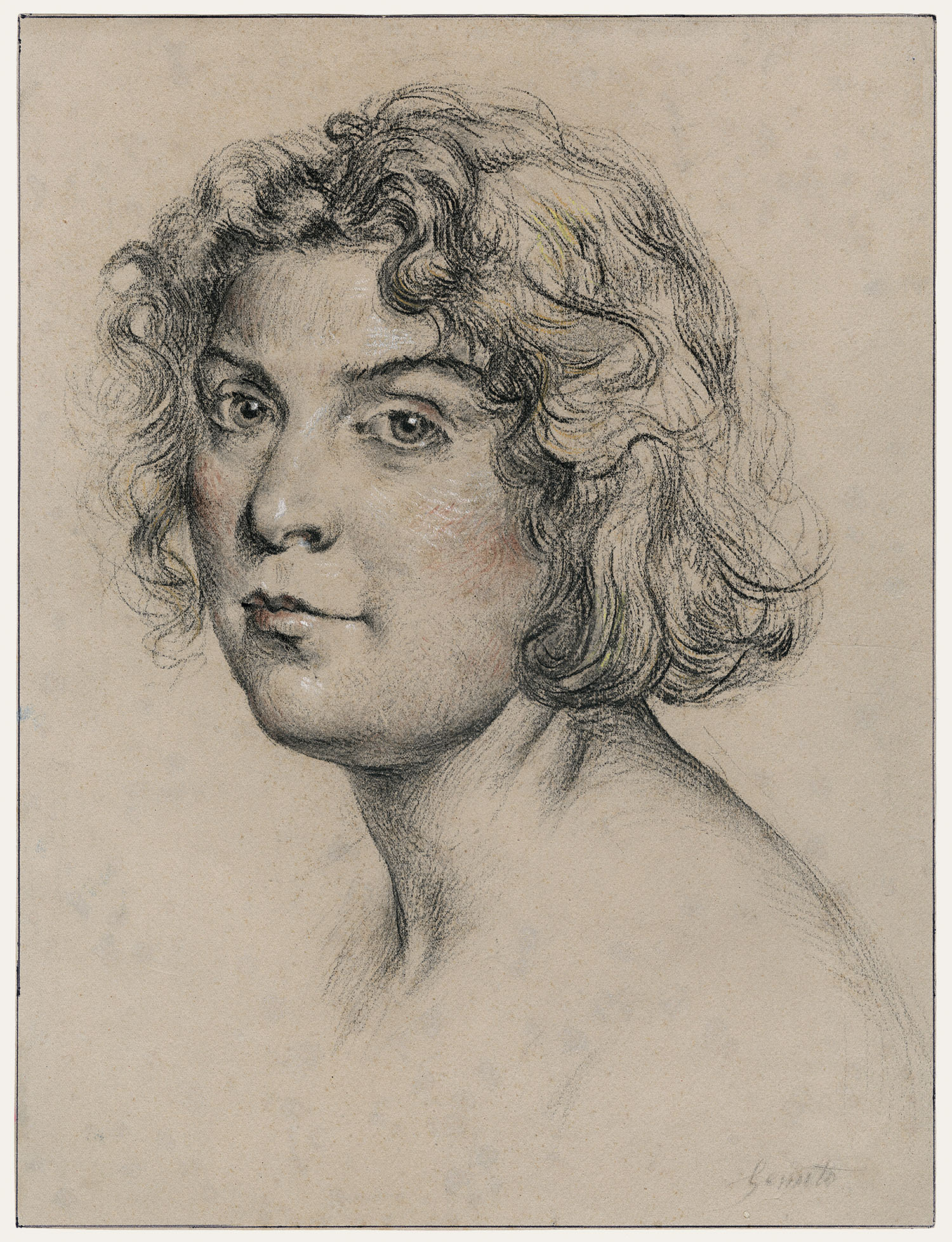Vincenzo Gemito
Naples 1852 - 1929
367 x 278 mm
This is one of the numerous portrait drawings executed by Gemito after 1910. Together they reveal the artist’s lifelong interest in portraiture, and such was his mastery that he was much in demand among the wealthy bourgeoisie. While this provided valuable income, his compelling self-portrait drawings should not be overlooked, many of which survive from the latter part of his life.
The young woman’s identity remains a mystery. She is energetically drawn in three-quarter profile; the handling is vigorous and the shading strong, with subtle touches of red chalk hinting at her complexion and highlights picked out in white. Here we see a three-dimensional plasticity that only a sculptor can achieve. The roundness of the sitter’s face, with its delicate suggestion of shade and skin-tone, is contrasted by her rich mane of hair flowing in waves from the crown of her head to the nape of her neck.
Gemito studied the art of the ancient world with great diligence and immense passion, and his consummate skill in describing this sitter’s hair finds many parallels in his sculpted works. He was forever intent on capturing all aspects of his subjects’ features which he would meticulously integrate into likenesses that were both balanced and natural; his ultimate goal was to achieve a latter-day equivalent of Classical and Hellenistic perfection.
References:
S. Di Giacomo, Vincenzo Gemito, Rome 1923.
E. Somarè and A. Schettini, Gemito, Milan 1944.
B. Mantura, Temi di Vincenzo Gemito, catalogue of the exhibition in Spoleto, Rome 1989.
M. S. De Marinis, Gemito, l’Aquila-Rome 1993, pp. 140-145, pl. 154;
D.M. Pagano, Gemito, catalogue of exhibition in Naples, Museo Diego Aragona Pignatelli Cortes, Naples 2009, p. 252;
Jean-Loup Champion, Gemito, le sculpteur de l'âme napolitaine, catalogue of the exhibition at the Petit Palais, Paris 2019, pp.162-167.
Signed lower right Gemito.
Price on application
Information on the master
Vincenzo Gemito, one of the premier Italian sculptors of the 19th century, was essentially self-taught. Discovered on the foundling hospital's doorstep and adopted by a poor artisan, Gemito got work in a sculptor's studio when he was a boy. In his youth, he worked for two local sculptors, Emanuele Caggiano and Stanislao Lista, but neither seems to have had much stylistic influence on him. Gemito's realistic representations of Neapolitan street life marked a dramatic shift from earlier artists' sentimentalizing. His sculpture was so immediately alive and strong that he became famous at a very early age. Gemito sold a statue to the city of Naples when he was sixteen years old; and he was only twenty-one years old when he was commissioned to model the portrait of Giuseppe Verdi. Gemito's Pescatorello (Neapolitan Fisherboy) brought him acclaim at the 1877 Paris Salon, and he stayed in Paris for three years.
Gemito was also an immensely gifted draughtsman. After completing an important public commission, the portrait of Charles V, in 1887, he suffered a mental collapse and gave up sculpture almost entirely: he withdrew to one room, concentrating on drawing and seeing few friends. Around 1909 Gemito resumed sculpting, incorporating Hellenistic influences into his work, inspired by the works of art that the diggings of Pompeii and Herculaneum had brought to light and which were exhibited in the Archeological Museum in Naples. His sculpture demonstrated a delicate sensitivity and detail that ultimately derived from his drawings.
